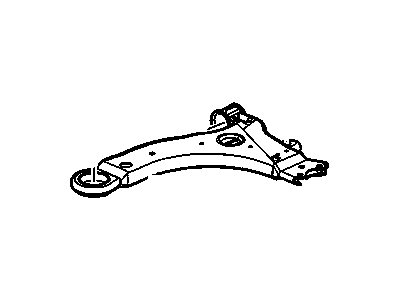
My Garage
My Account
Cart
Genuine Cadillac Fleetwood Ball Joint
Control Arm Joint- Select Vehicle by Model
- Select Vehicle by VIN
Select Vehicle by Model
orMake
Model
Year
Select Vehicle by VIN
For the most accurate results, select vehicle by your VIN (Vehicle Identification Number).
2 Ball Joints found
Cadillac Fleetwood Stud,Front Lower Control Arm Ball
Part Number: 9769579$113.82 MSRP: $229.51You Save: $115.69 (51%)Cadillac Fleetwood STUD KIT,FRT LWR CONT ARM BALL
Part Number: 19416895$20.49 MSRP: $50.23You Save: $29.74 (60%)
Cadillac Fleetwood Ball Joint
This is used in Cadillac Fleetwood cars mainly in the suspension and steering system; it links the control arms to the steering knuckles. While these Ball Joints enable free rotation in two planes but restrict translation, making the vehicle handle well, stable, and offer a comfortable ride. Cadillac Fleetwood cars normally come with upper and lower ball joints and the later models have additional ball joints in the rear suspension. Made from steel, these ball joints include a bearing stud and a socket pressed into a rubber-like boot mainly to avoid contamination from dirt and to increase the movement range of the lubricant. In the present day ball joints have replaced the older kingpin designs providing the required amount of adjustability for the caster and camber without the extra degree of freedom that results in extra conformity and increased wear on the tire.
Each OEM Cadillac Fleetwood Ball Joint we offer is competitively priced and comes with the assurance of the manufacturer's warranty for the part. Furthermore, we guarantee the speedy delivery of your orders right to your doorstep. Our hassle-free return policy is also in place for your peace of mind.
Cadillac Fleetwood Ball Joint Parts Questions & Experts Answers
- Q: How to inspect the lower ball joint for any issues on Cadillac Fleetwood?A:If you have problems with sealing or tire movement on your Cadillac DeVille, DeVille Concours, or Fleetwood, replace the lower ball joint immediately. To check, lift, and prop up the vehicle, while leaving the front suspension to dangle. The assistant needs to hold the tire from both ends. Moving the top part in and out will show if the knuckle turns up and down compared to the Control Arm; this means the ball joint needs to be swapped. When you wobble the tire wheel, look for movements at the knuckle boss to check the ball stud tightness, and double-check that the castellated nut is properly torqued, as a loose nut may actually mean the ball stud is bent or the hole has grown too big. Replace the ball joint when you find the ball stud disconnected and the joint demonstrates looseness or when you can twist it in its socket. You have to first lift the vehicle, then place jack stands to support it. Next you remove the wheel and tire assembly from underneath. Use a ball joint separator tool to take out the cotter pin and nut from the ball joint stud before disconnecting it from the Steering Knuckle. DeVille and Fleetwood require us to first loosen the nut on the stabilizer bar links, drill out the rivets holding the ball joint to the lower control arm, and take the ball joint off. Follow these steps to install: Put the new ball joint onto the lower control arm's three mounting bolts and nuts, tapping the bolts from above. Fasten all nuts to the manufacturer-recommended torque. Obliterate the stabilizer bar link bolt, plug in the ball joint to the steering knuckle, plug in the castellated nut, and bolt it with particular force, remembering to re-enforce the damage with additional tightening whenever needed to affix the cotter pin. Before driving, take off any protective cover for the CV-joint boot, put the tire and wheel back on, and lower the vehicle.





